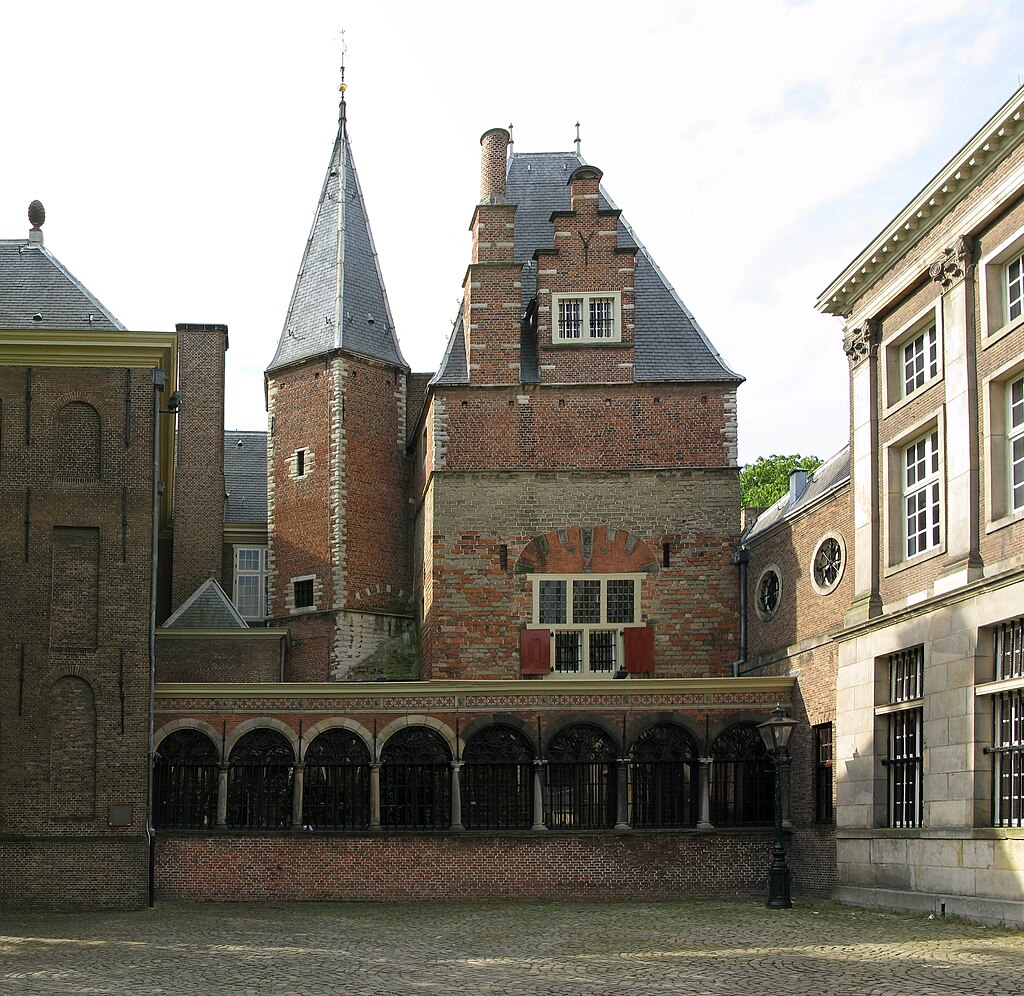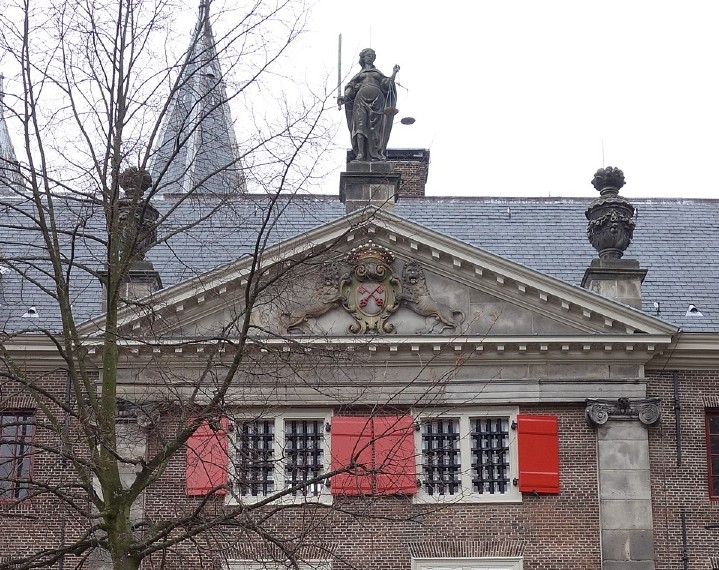
So long, Gravensteen: ‘History dripped off the walls’
Historic and iconic yet expensive and cold. It’s with mixed feelings that the university is leaving the Gravensteen building, which dates back to the 12th century. How was it to work and study in this former Leiden prison?

Building managers Judith de Wilde and Theo Kes walk one last time through a deserted Gravensteen, their footsteps echoing through the empty rooms. With all the furniture gone, there’s nothing to detract from the building’s medieval looks. ‘Everything is unique; nothing is standard’, says construction engineer Kes. ‘You can read the building’s history in its very fabric, however barbaric that history might have been.’
The oldest part of Gravensteen, the square tower, was built in the 12th century as a refuge for the counts of Holland. From 1436, the building served for centuries as a prison and was later also the seat of the court of law. Kes and De Wilde point to the former cells, the heavy oak doors and the windowless interrogation rooms. ‘These were used as ad hoc meeting rooms, not as offices’, De Wilde is keen to add. The spacious courtroom above served as a board and meeting room.
Gaoler’s box-bed
The university has used the building since 1957, when part of the law faculty moved in. ‘This building and the law go way back – just look at lady Justice up there on the roof’, says De Wilde. ‘That made it so fitting for the law faculty to be here.’
Over the years other university services such as Student and Educational Affairs came to the building too. The workspaces were in the larger rooms looking out on Pieterskerkplein on one side or het Gerecht on the other. The lower rooms – like the ones under the gaolers’ box-beds – served as storage spaces.
-

Gravensteen from ’t Gerecht. The square tower dates from the 12th century. Erik Zachte -

Judith de Wilde: ‘Everything was made with the greatest of craftmanship.’ -

The stone spiral staircase leading to the tower room. -

Lady Justice on the roof. -

The cell complex below. Marc de Haan. -

A torture device still stands in the courtyard. -

View of Pieterskerk. -

Some windows still have bars. -

The university has since handed the keys over to the Municipality of Leiden.
Centuries-old thresholds
This unspoilt medieval character is also one of the reasons why the university is leaving this Municipality of Leiden building. The upper floors were difficult to access for students and staff with a disability, Kes explains. Installing a lift and removing the centuries-old thresholds was not what one would want for this listed building.
The old single-glazed windows made the building difficult to heat, which was reflected in the energy bills, and staff complained in the Personnel Monitor about offices being too cold or hot. Added to that, there was less need for office space with so many people working from home since the pandemic, says De Wilde.
‘I didn’t feel like a prisoner here’
Egbert Koops, Professor of Legal History
‘It was a prison but I didn’t feel like a prisoner. I worked here in 2003 while doing my PhD in law. The building has served as a court of law, a workhouse, a study centre and a fantastic library. All these functions could be seen in the different storeys. The heavy doors, the maze of narrow corridors and half-floors, the judges’ gallery and the cells in the basement. History dripped off the walls.
‘I looked out over the roofs of het Gerecht, where the last execution took place in 1853. Part of the law library was here with the collection of Professor Meijers, who was deported in the war and was one of the authors of the Civil Code that followed. This building and that world of books got me interested in the history of law as a student. Its upkeep is expensive and it is difficult to adapt to modern standards. I understand the decision but it hurts to say goodbye.’
Apparitions
Many staff members, including Kes and De Wilde, were willing to put up with the minor inconveniences. De Wilde worked in the building from 2002 to 2008 and later joined the team responsible for its upkeep. ‘You walk into history here. Some staff even had stories about apparitions or energies they felt when alone there. I never had that myself.’
‘Our tower room’
Remco Zeedijk, communication team leader, SEA
‘I worked here for about 12 years as the editor of the student website. Here in one of the most beautiful buildings in Leiden, I also sat in one of the most beautiful rooms, the tower room. It was a daily challenge to climb the steep spiral stairs or go down for a meeting in one of the former cells. That’s where the gruesome history is particularly tangible. With the thick walls, crumbling frescos and lack of daylight, you hoped the thick cell door wouldn’t accidentally slam shut on you.
‘After meetings, I would climb the stairs again to our tower room and be glad to see it flooded with light. It was often too hot, cold or draughty, but I wouldn’t have missed it for the world. Hopefully, the building will be used for something that does justice to its unique character.’
Old drawings
Kes also had an office in the building for quite some time and was responsible for its upkeep. ‘We made sure to respect Gravensteen’s historical character in any maintenance work and used the old drawings for restorations so we could return aspects like the paint colour to their original state.’
Their last round takes them up the steep stone spiral staircase to the tower room with the phenomenal view over Pieterskerkplein. ‘It’s a real shame we’re getting rid of this’, says Kes. ‘The building deserves the university; we go together. We don’t know what the municipality will do with it but let’s hope it escapes unscathed.’
